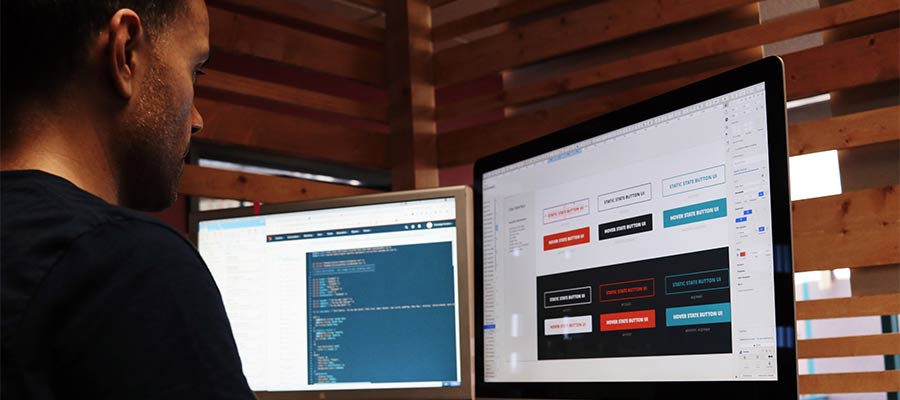Our line of work boasts guides to absolutely everything. For instance, gurus are there to tell us about every new CSS feature – including why it’s the next big thing (or not). It’s part of what happens when anyone can publish anything.
And since designers know the web better than anyone, we tend to build blogs and write about our experiences, hopes, fears, and even biases more than other professions. Virtually every subject can be promoted, explained, or outright dismissed.
But as a designer, how does one even begin to digest all of the tools, libraries, and opinions out there? Sometimes it feels like there are so many things we need to learn to keep moving forward. You may not know where to begin. Frankly, it’s overwhelming.
To that end, here are some tips for filtering out the noise and focusing on the good stuff.
You Don’t Have to Know It All
When you see the headlines about some great new tool or JavaScript library, you might start to feel like you’re falling behind your peers. After all, you just found out that there’s this amazing thing being used to reinvent the web. Meanwhile, you’re still poking around with “outdated” techniques.
The irony of it all is that many of these tried-and-true techniques have been around for quite some time. That new flavor of the month might disappear before you’ve even had a chance to learn it. Of course, there’s always a chance that it will become a huge success. But the point is that it’s okay to wait things out and see how it all develops.
For instance, have you ever worked with some must-have tool and implemented it into a project, only to find some fatal flaw that makes it unusable? I’ve had it happen more than a few times. I can even recall an instance where I pointed out such an issue to its developer, who said, “Wow, thanks!” – only to leave the problem unfixed.
As always, you have to be careful when choosing what to use and what to leave behind. Just because a tool is generating buzz doesn’t mean you’re obligated to try it.

Realize That Opinions Aren’t Always Based on Fact
I don’t think I’m alone in saying that I love to share my opinions. If you’ve ever seen my Twitter feed, you probably get that message loud and clear. And a well-written opinion can serve as a valuable resource when making decisions on anything from which car you should buy to which WordPress plugin is worth installing.
But they should also be taken with that proverbial grain of salt. While I’d like to think that most people are pretty honest when sharing their thoughts, there are a variety of reasons why someone may love or hate a particular thing. The hard part for those of us who read these opinions is that the author’s reasoning may not always be so clear.
Did they love a product because it works or because they’re friends with the developer? Did they hate something because they had a bad experience or just didn’t know what they were doing? So often it’s difficult to tell.
Opinions can be both insightful and fun to read. But we probably shouldn’t take them as the final word. If we’re interested in finding out more, we should research or even try the item in question for ourselves.

Look for What’s Relevant and Useful
As a designer, your social media feeds and inbox can be inundated with tools, tutorials, and product announcements. Keeping track of it all certainly isn’t for the faint of heart. And even if something looks cool, you may not have the time to sit there and read through each item.
This is where being picky can help. The truth is that you probably aren’t going to use most of whatever fills up your feed. Instead, look for items that you think are useful for your specific workflow.
That means if you’re a WordPress developer, you can probably filter out most of the Drupal or Joomla stuff (unless you want to learn about them). If you’re exclusively a front-end designer, then code frameworks may not be very relevant.
You only have so much time in a day. As such, dedicate it to the things that will help you improve your skills and efficiency.

Tune Out When You Can
Like so many people in our world, designers tend to keep their phones with them at all times. And our jobs often require constant vigilance. Websites break, clients have questions, and so on.
Just having that smartphone in hand is a great temptation to start scrolling through feeds and checking email. It’s yet another opportunity for information overload.
It’s healthy to take breaks from it whenever possible. Even shutting yourself off from the online world for an hour or two before bed can make a positive impact.
Otherwise, you risk becoming burned out on technology. That would be a shame because there’s always something new to learn – if you know how to filter through the junk.
Top